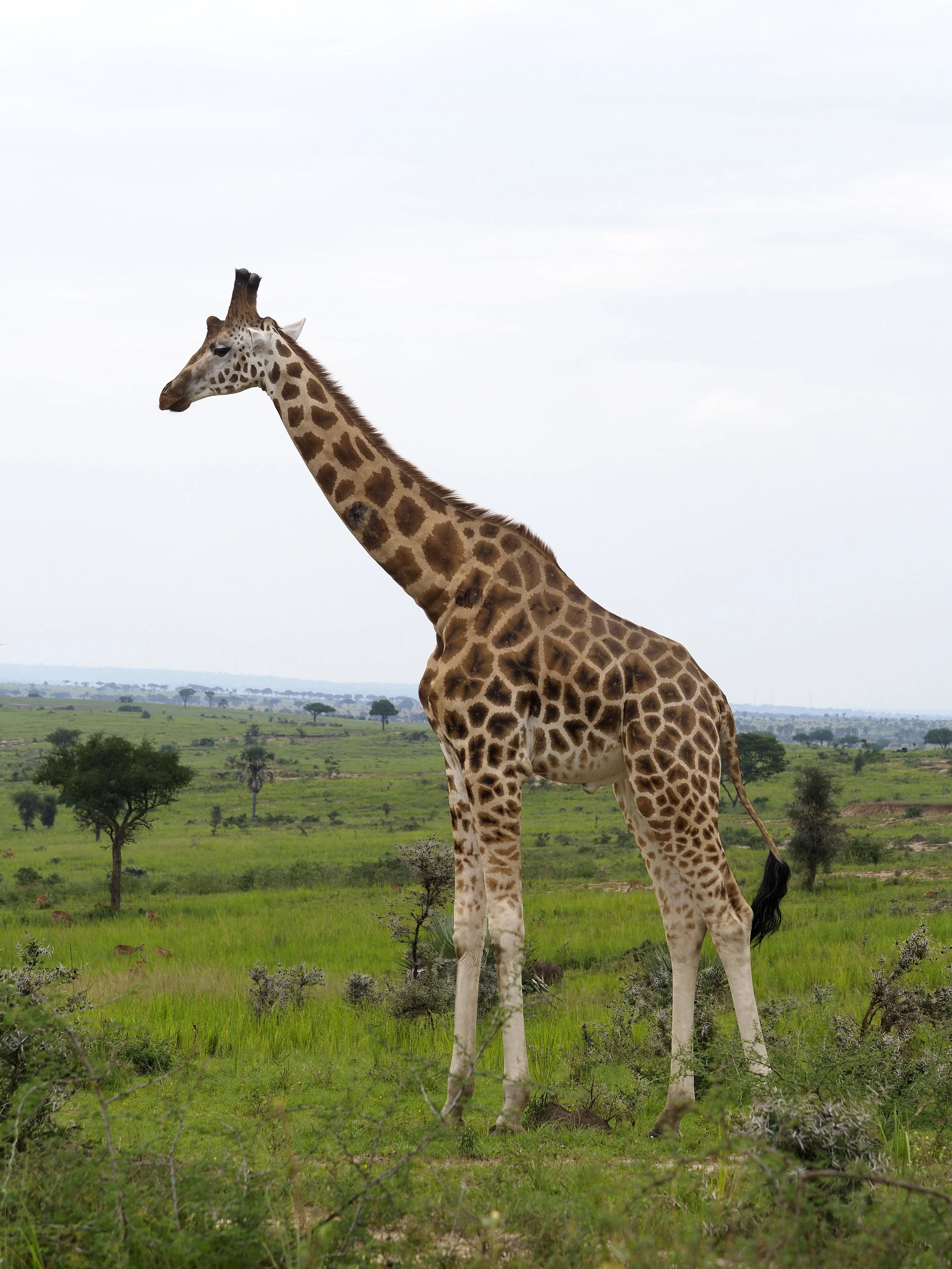Rothschild's Giraffe
"Rothschild’s Giraffe" by Charity Oetgen (Watercolor)
Your purchase is helping Expedition Art and Saving Species purchase land in Sumatra! Learn more about the project.
Habitat
The Rothschild’s giraffe lives on the African continent where they inhabit the hot woodlands, savannahs, and shrublands of Kenya and Uganda. Lake Baringo in Kenya is the common area where these giraffes live. Most of these animals live on one of two wildlife refuges in Kenya: Lake Nakuru National Park and the Eastern parts of Uganda in the Murchison Falls National Park.
Family Life
Rothschild Giraffes live in small herds, separately but in close proximity. The only time the two genders interact is for mating. For the most part, giraffes are friendly, but the males are known to engage in fights for mating. Since this species can mate all year long, these battles seem to be often. Reproduction occurs when giraffes are about three-five years of age.
Mothers have a gestation period that lasts from 14 to 16 months, and they give birth to a single calf of about six feet tall. When a mother gives birth, she and her offspring stay away from their groups from 10 days to a month and then return to the herd where the rest of the members accept the new member.
Lifespan
They can live up to 20 years.
Hunting Habits/Diet
They are herbivores and feed on the leaves of tall trees such as the acacia or wild apricot. They also eat sprouts and fruits. They will spend several hours feeding during the day. Males can eat up to 80kg of leaves a day and the species has a chambered stomach to help with digestion.
Population
Today there are only around 1500 individuals in the wild.
Fun Fact
The Rothschild species is one of the tallest giraffes.
They can be an astonishing 19 feet in height and weigh about 2,500 pounds with the males weighing more than the females by several hundred pounds.
Giraffes sleep standing up - but only for five minutes at a time, as they remain alert for predators, and a total of about two hours a day.
Why are they Endangered?
These giraffes have quite a few predators including hyenas, lions, crocodiles and leopards who mainly target the young and sick. Poaching of the Rothschild Giraffe also continues to be a severe problem. Additionally in Tanzania, it is believed that consuming Rothschild giraffe’s brains and bone marrow can cure HIV-AIDS victims. As a result, fresh severed heads and giraffe bones can fetch prices of up to $140 per piece.
Status
Vulnerable


